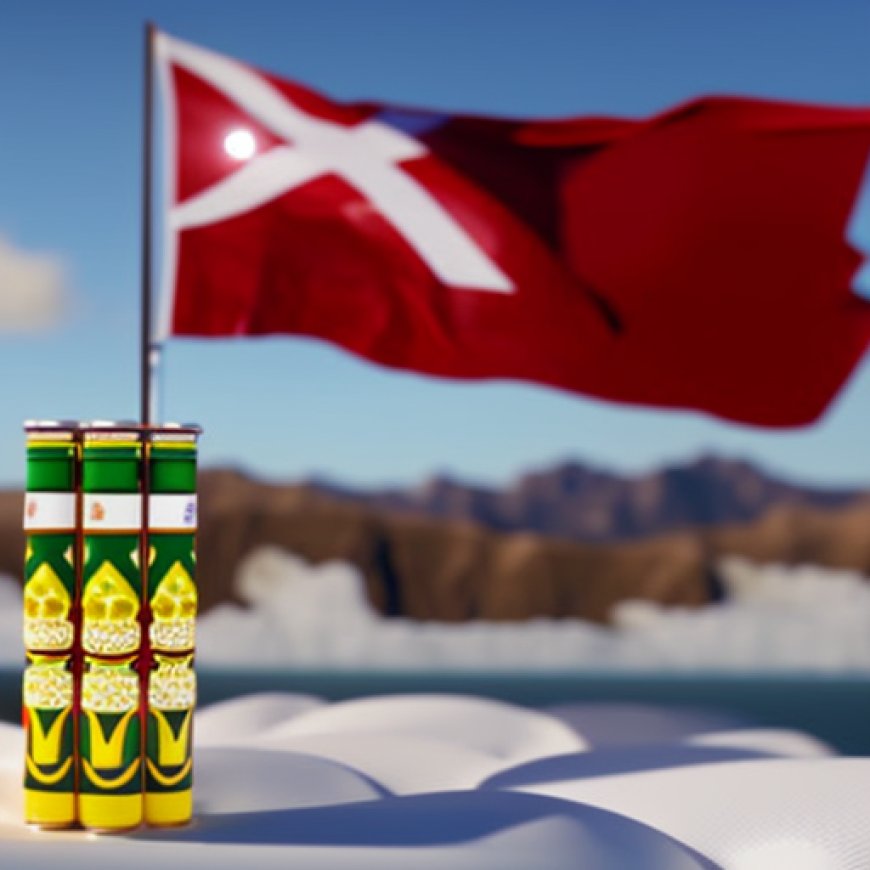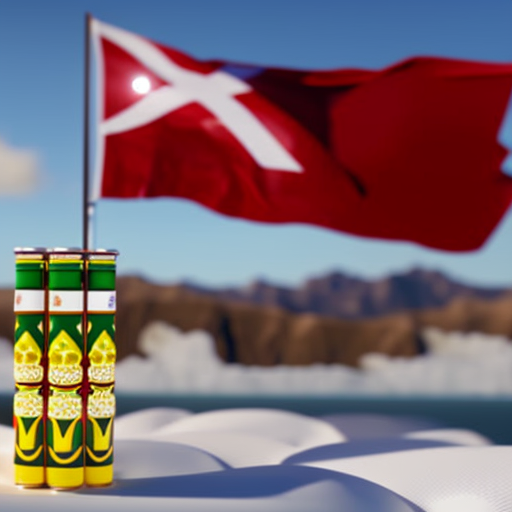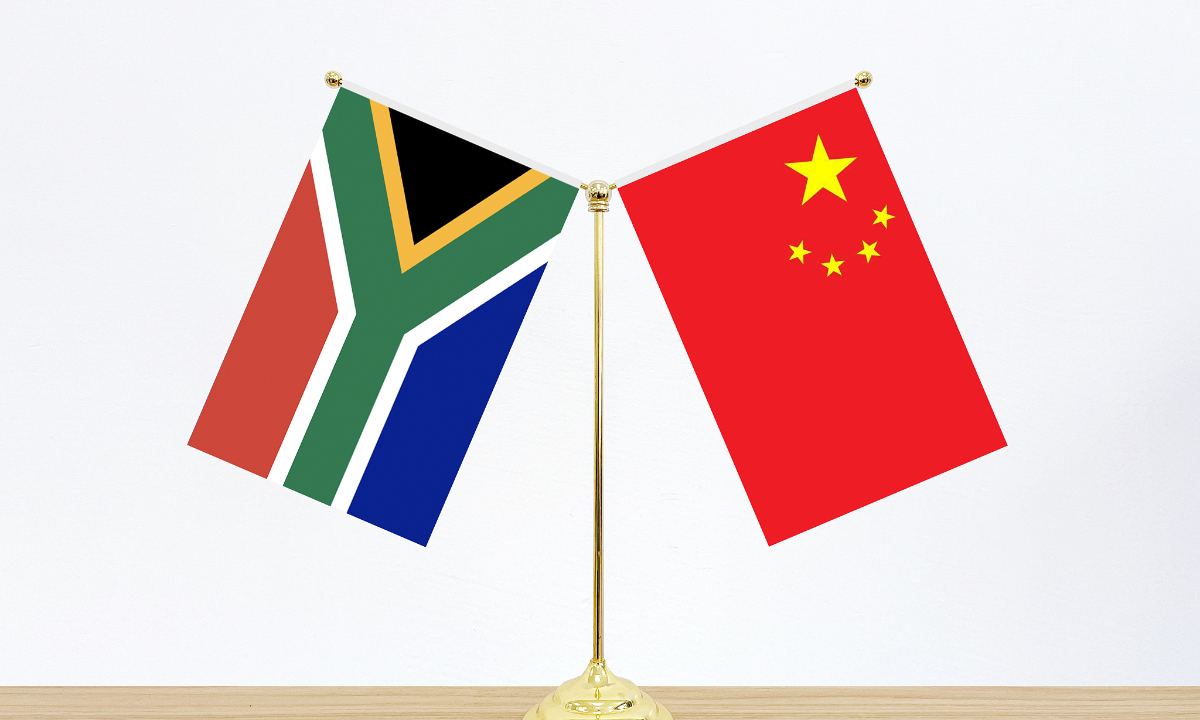China-South Africa cooperation set to boom as bilateral relations enter ‘golden age’
China-South Africa cooperation set to boom as bilateral relations ... Global Times


Cooperation between China and South Africa enters “golden age” during President Xi’s state visit

China South Africa Photo:VCG
Introduction
Cooperation between China and South Africa is set to further boom following Chinese President Xi Jinping’s state visit to South Africa as bilateral relations have entered a “golden age,” experts said.
State Visit and BRICS Summit
At the invitation of President of the Republic of South Africa Cyril Ramaphosa, Xi will attend the 15th BRICS Summit to be held in Johannesburg, South Africa and pay a state visit to South Africa from Monday to Thursday, the Chinese Foreign Ministry announced on Friday.
Discussion and Blueprint for Growth
During the visit, Xi will exchange views with Ramaphosa on bilateral relations and international and regional issues of mutual interest, and draw up a blueprint for the growth of bilateral relations, Chinese Foreign Ministry spokesperson Wang Wenbin told a press conference on Friday. Wang emphasized that China-South Africa relations have entered a “golden age,” and the future holds great promise for the relationship.
Bilateral Relations and Sustainable Development Goals (SDGs)
South Africa is China’s comprehensive strategic partner and the first African country that joined the China-proposed Belt and Road Initiative (BRI) cooperation, Wang said. Experts anticipate the state visit to consolidate the partnership in fields that are already in progress while injecting fresh impetus into bilateral cooperation in aspects with unleashed potential to help South Africa be further involved in the global industrial chain, especially under the China-proposed BRI.
Economic Cooperation and Post-Pandemic Recovery
South Africa has a relatively better economy and strong foundation in industrial development and the processing industry in Africa, which has been a major focus for trade and economic exchanges. Cooperation will help South Africa’s post-pandemic economic recovery and diversify its development patterns.
Investment and Trade
China’s foreign direct investment stock in South Africa has exceeded $10 billion covering various fields from finance to energy, while South Africa is the largest African country in terms of investing in China. The two sides have formed stable and strong cooperation for the industrial and supply chains. Bilateral trade in the first seven months of 2023 reached 226.15 billion yuan ($31.06 billion) with a year-on-year increase of 10.5 percent.
Infrastructure Development and New Economy
Chinese corporations have been winning public tenders for constructing roads, bridges, dams, and ports in South Africa while actively working with the country in dealing with electricity shortages and energy production under the BRI. There is a call for greater cooperation in terms of the new economy, the digital economy, and technologies to help the country in the digitalization of its economy and transformation of production methods.
Cultural Exchanges and Future Cooperation
Enhanced cooperation is expected in the financial sector targeting aspects such as settlement in local currencies under the BRI. There is also potential for cultural exchanges in movies, tourism, and education. The continued inflow of Chinese investment will help promote local employment.
BRICS Summit and Regional Integration
The upcoming BRICS Summit will be the first in-person BRICS summit in more than three years and the first BRICS summit to be held in Africa in five years. China and South Africa will further voice the major concerns of developing economies, support for core topics such as the multilateral trading system, and further promote regional integration in Africa.
SDGs, Targets, and Indicators
-
SDG 8: Decent Work and Economic Growth
- Target 8.1: Sustain per capita economic growth in accordance with national circumstances and, in particular, at least 7 percent gross domestic product growth per annum in the least developed countries
- Indicator 8.1.1: Annual growth rate of real GDP per capita
- Indicator 8.1.2: Proportion of informal employment in non-agriculture employment, by sex
-
SDG 9: Industry, Innovation, and Infrastructure
- Target 9.1: Develop quality, reliable, sustainable, and resilient infrastructure, including regional and transborder infrastructure, to support economic development and human well-being, with a focus on affordable and equitable access for all
- Indicator 9.1.1: Proportion of the rural population who live within 2 km of an all-season road
- Indicator 9.1.2: Passenger and freight volumes, by mode of transport
-
SDG 17: Partnerships for the Goals
- Target 17.6: Enhance North-South, South-South, and triangular regional and international cooperation on and access to science, technology, and innovation and enhance knowledge sharing on mutually agreed terms, including through improved coordination among existing mechanisms, particularly at the United Nations level, and through a global technology facilitation mechanism
- Indicator 17.6.1: Number of science and/or technology cooperation agreements and programmes between countries, by type of cooperation
Table: SDGs, Targets, and Indicators
| SDGs | Targets | Indicators |
|---|---|---|
| SDG 8: Decent Work and Economic Growth | Target 8.1: Sustain per capita economic growth in accordance with national circumstances and, in particular, at least 7 percent gross domestic product growth per annum in the least developed countries | Indicator 8.1.1: Annual growth rate of real GDP per capita Indicator 8.1.2: Proportion of informal employment in non-agriculture employment, by sex |
| SDG 9: Industry, Innovation, and Infrastructure | Target 9.1: Develop quality, reliable, sustainable, and resilient infrastructure, including regional and transborder infrastructure, to support economic development and human well-being, with a focus on affordable and equitable access for all | Indicator 9.1.1: Proportion of the rural population who live within 2 km of an all-season road Indicator 9.1.2: Passenger and freight volumes, by mode of transport |
| SDG 17: Partnerships for the Goals | Target 17.6: Enhance North-South, South-South, and triangular regional and international cooperation on and access to science, technology, and innovation and enhance knowledge sharing on mutually agreed terms, including through improved coordination among existing mechanisms, particularly at the United Nations level, and through a global technology facilitation mechanism | Indicator 17.6.1: Number of science and/or technology cooperation agreements and programmes between countries, by type of cooperation |
Analysis
1. Which SDGs are addressed or connected to the issues highlighted in the article?
The SDGs addressed or connected to the issues highlighted in the article are SDG 8: Decent Work and Economic Growth, SDG 9: Industry, Innovation, and Infrastructure, and SDG 17: Partnerships for the Goals.
2. What specific targets under those SDGs can be identified based on the article’s content?
Based on the article’s content, the specific targets under those SDGs are:
– Target 8.1: Sustain per capita economic growth in accordance with national circumstances and, in particular, at least 7 percent gross domestic product growth per annum in the least developed countries.
– Target 9.1: Develop quality, reliable, sustainable, and resilient infrastructure, including regional and transborder infrastructure, to support economic development and human well-being, with a focus on affordable and equitable access for all.
– Target 17.6: Enhance North-South, South-South, and triangular regional and international cooperation on and access to science, technology, and innovation and enhance knowledge sharing on mutually agreed terms, including through improved coordination among existing mechanisms, particularly at the United Nations level, and through a global technology facilitation mechanism.
3. Are there any indicators mentioned or implied in the article that can be used to measure progress towards the identified targets?
Yes, there are indicators mentioned or implied in the article that can be used to measure progress towards the identified targets:
– Indicator 8.1.1: Annual growth rate of real GDP per capita.
– Indicator 8.1.2: Proportion of informal employment in non-agriculture employment, by sex.
– Indicator 9.1.1: Proportion of the rural population who live within 2 km of an all-season road.
– Indicator 9.1.2: Passenger and freight volumes, by mode of transport.
– Indicator 17.6.1: Number of science and/or technology cooperation agreements and programmes between countries, by type of cooperation.
These indicators can be used to track and measure progress towards achieving the targets under SDGs 8, 9, and 17.
4. Table: SDGs, Targets, and Indicators
| SDGs | Targets | Indicators |
|---|---|---|
| SDG 8: Decent Work and Economic Growth | Target 8.1: Sustain per capita economic growth in accordance with national circumstances and, in particular, at least 7 percent gross domestic product growth per annum in the least developed countries | Indicator 8.1.1: Annual growth rate of real GDP per capita Indicator 8.1.2: Proportion of informal employment in non-agriculture employment, by sex |








